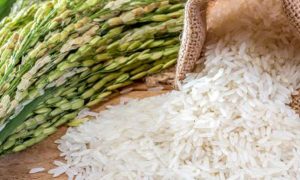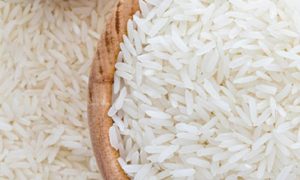Shifting food preferences generate high demand for rice

In the past four decades, a shift in food preferences towards rice has surged, with consumption rising from 10,000 to 120,000 tonnes annually. The CLAFA report underscores this change, emphasizing alternative crops. Government aims for self-sufficiency, while Japan supports rice cultivation in Zimbabwe. Nerica rice production uplifts millions from poverty. First Lady Dr. Auxillia Mnangagwa champions local rice production, with successful pilot schemes like Marange Irrigation Scheme, yielding varieties 1, 3, and 7.
SHIFTING food preferences among various population demographics in the last four decades from traditional staple grains like maize, sorghum and millet have seen a spike in the demand for rice.
According to the Crops, Livestock, and Fisheries (second round assessment) CLAFA for 2023/24, rice consumption has increased from 10 000 tonnes 10 years ago to over 120 000 tonnes annually with monthly consumption reaching 10 000 tonnes.
“It is estimated that 15 percent of the population consumes 120 000 tonnes of rice annually, 450 000 tonnes potatoes annually. In this CLAFA-2 context, alternate crops are used in sequence to maize or traditional grains, as part of the diet. In this context, alternative crops are the main starch source, not maize or traditional grains,” read the report.
Food tastes have changed significantly over the last four decades. Apart from maize, sorghum and millet staple grain food, there is a new demand for rice in the country. A US$80 million rice import bill speaks volumes about the changing staple taste.
According to the International Rice Research Institute (IRRI), 90 percent of the world’s rice is cultivated in South-east and East Asia.
Globally, rice is grown in more than a hundred countries with a total harvested area of nearly 160 million\ hectares producing more than 700 million tonnes every year.
Meanwhile, Government is also working on a rice policy to ensure the nation moves towards self sufficiency in rice production.
Japanese New Rice for Africa (Nerica) expert Tatsushi Tsuboi highlighted that Japan would start sending rice experts to Zimbabwe to provide technical skills for the cultivation of Nerica rice.
“Food security is under the spotlight because of climate change and other issues. We are providing food assistance and enhancing cooperation in agricultural infrastructure and rice production.
“In February, we made a new commitment to Zimbabwe of US$1,4 million through the World Food Programme and the quantity is about 1 300 tonnes of cereal, including Japanese rice. Asian rice is a high yielding variety while African rice is resistant to drought and disease so the two types complement each other,” added Mr Tsuboi.
Production of this type of rice has been successful in West Africa and according to the Africa Rice Centre it has lifted eight million people out of poverty and food insecurity.
In a related development, AGRIC4SHE Patron First Lady Dr Auxillia Mnangagwa has envisioned empowering women, reducing rice imports and improving household nutrition through local rice production.
She duly chose Marange Irrigation Scheme for the pilot project, with plans being made for a nationwide expansion. Beneficiaries under the programme have since produced Nerica varieties one, three and seven. Nerica three and seven are long-season varieties, while Nerica one is the aromatic type.
Source Link : https://www.herald.co.zw/shifting-food-preferences-generate-high-demand-for-rice/
















